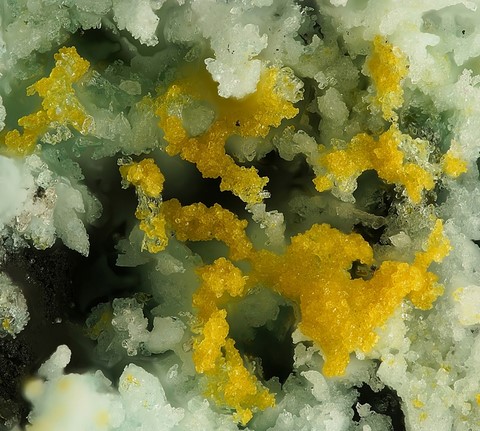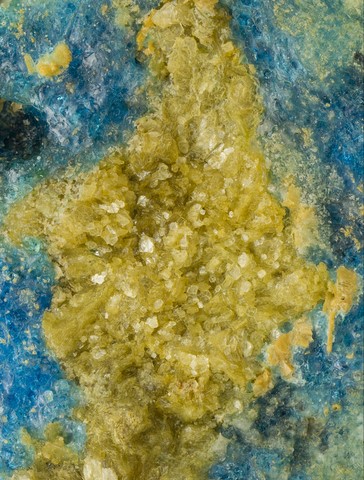 Copiapite - Encyclopedia
Copiapite - Encyclopedia
Class : Sulfates, chromates, molybdates
Subclass : Hydrated sulfates
Crystal system : Triclinic
Chemistry : Fe5(SO4)6(OH)2 20H2O
Rarity : Quite common
Copiapite is a sulfate of ferrous iron (Fe2+) and ferric iron (Fe3+). It is a fairly widespread secondary mineral, formed by alteration of iron sulfides, mainly in arid climates. It is part of a classic mineralogical procession to which other iron sulfates belong (melanterite, jarosite, coquimbite, botryogen, etc...). These sulfates, like it, result from precipitation from "natural" sulfuric acid, formed by reaction of surface water with iron sulfides ; by changing environmental conditions (temperature, pH, redox potential) they are easily hydrolyzed into ferric hydroxides (goethite and "limonites"). Copiapite takes its name from where it was discovered : Copiapo (Chile). It appears in the form of tabular crystals, often very modified, in loosely compact aggregates or in encrustations of sulfur yellow to golden yellow and orange color, becoming greenish-yellow to olive green in massive varieties.
Main photo : Copiapite and chalcanthite from Coronel Manuel Rodríguez mine, Antofagasta, Chili © Tony Peterson
Copiapite in the World

Twinning
A contact twin with double axis [101] and composition plane {010} is known but not very common.
Fakes and treatments
No fake identified for this mineral species.
Hardness : 2.5 to 3
Density : 2.1
Fracture : Micaceous to irregular
Streak : White
TP : Transparent to opaque
RI : 1.506 to 1.600
Birefringence : 0.069
Optical character : Biaxial +
Pleochroism : None
Fluorescence : None
Solubility : Water
Magnetism : None
Radioactivity : None

